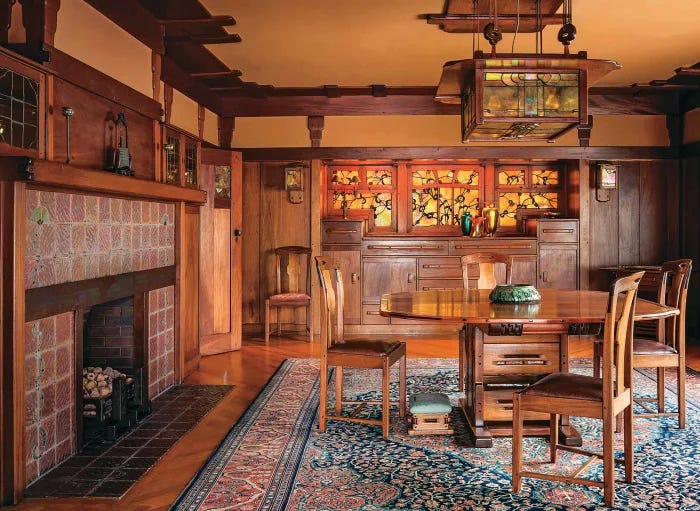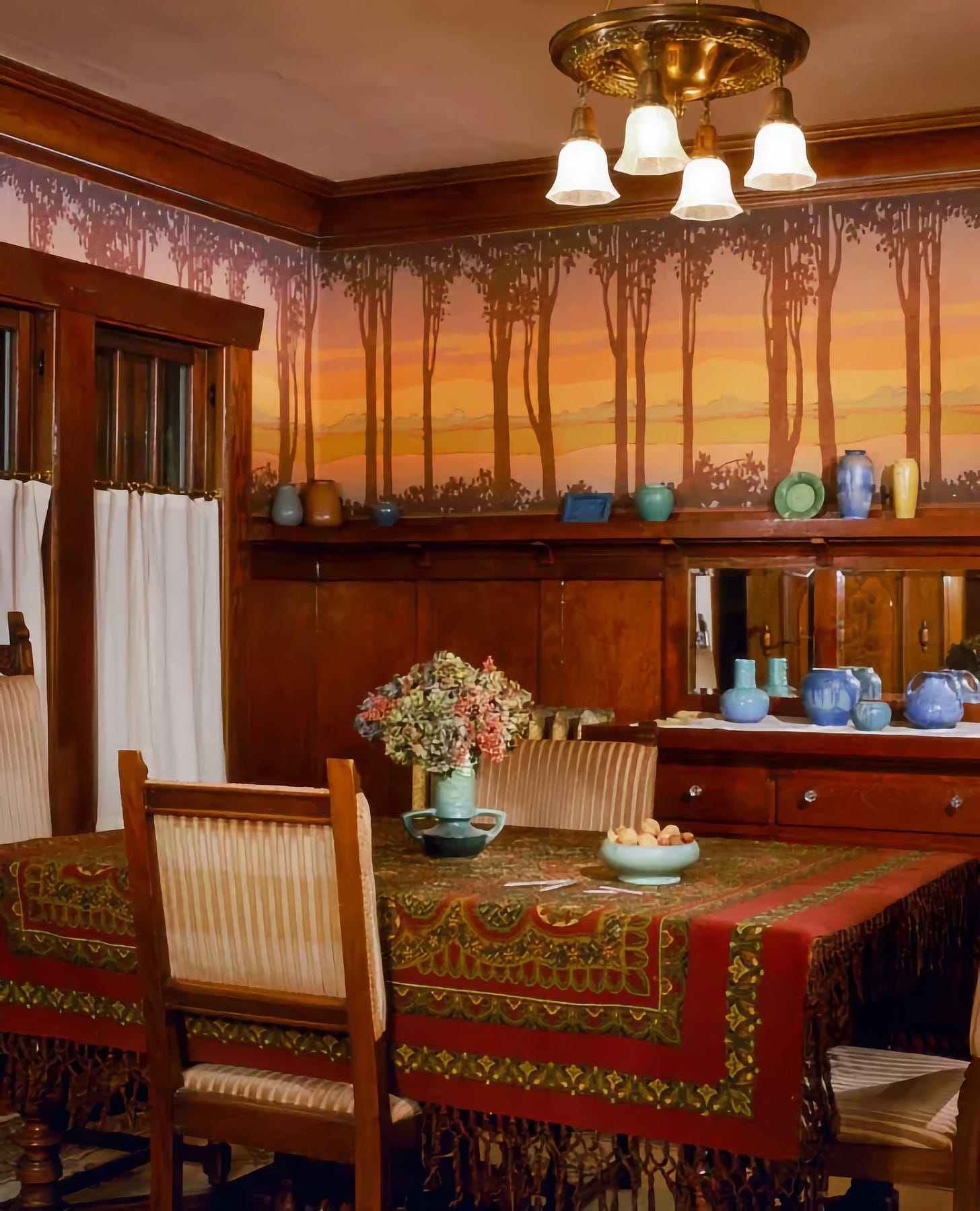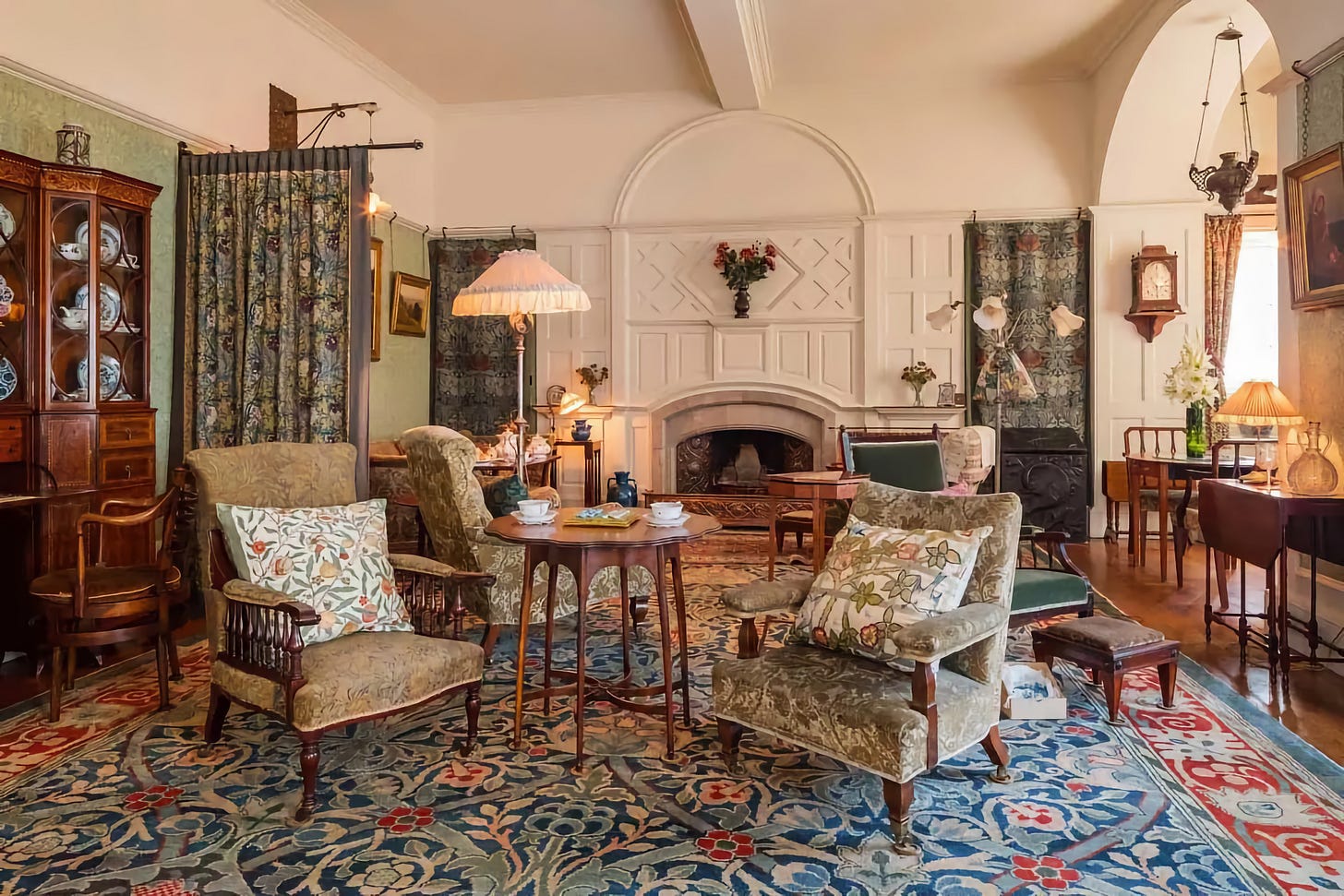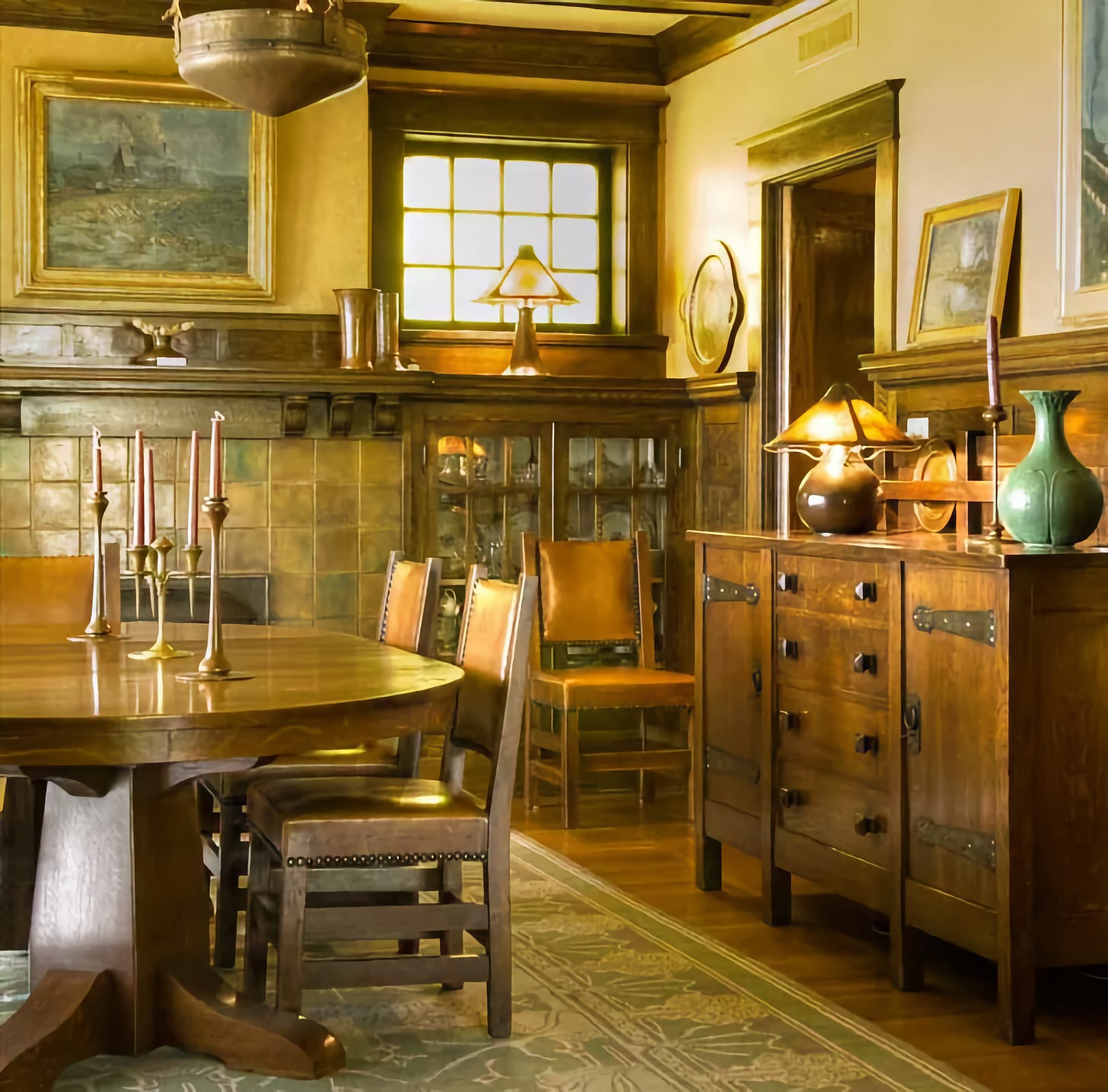The Movement That Laid the Foundation for Mid-Century Furniture Excellence
The Arts and Crafts movement and its influence on Mid-Century furniture
Two weeks ago, we shared the first chapter of our pamphlet “Midcentury Modern: a 70 Years-Long Success Story”, offering an overview of the periods, architectural movements, and design styles that we believe strongly influenced the mid-century modern aesthetic. We highlighted how each era contributed to shaping the timeless designs we admire today. This week, in the second chapter of the pamphlet, we delve deeper into the first of these transformative movements: the Arts and Crafts Movement.
Before starting this new chapter, I’d like to ask for 2 minutes of your time to fill out our first Substack survey. Your feedback will help us immensely in creating stories that match your interests. Thank you in advance for your contribution, and enjoy today’s story! Feel free to share your thoughts in the comments.
(Marco Guagliardo - Mid-Century Home’s Editor in Chief)

The Arts and Crafts movement, emerging in the late 19th century, was a powerful response to the Industrial Revolution's mass-produced goods, which many critics believed undermined centuries-old traditions of craftsmanship. Pioneered by figures like William Morris and profoundly influenced by John Ruskin's critiques of industrialization, the movement placed an emphasis on craftsmanship, natural materials, and the aesthetic and moral value of handmade objects. It sought not only to reconcile quality design with accessibility but also to elevate everyday objects to the status of art.
The Values
John Ruskin, a key influence on the movement, was a writer, art critic, and social thinker who lamented the loss of artistic integrity and craftsmanship in the face of industrial mass production. In his works, including The Seven Lamps of Architecture and The Stones of Venice, Ruskin argued for a return to the ideals of Medieval and Gothic art, which he saw as embodying a spiritual connection between maker and material. He condemned the soullessness of machine-made goods and advocated for a philosophy where design and craftsmanship were intertwined.
William Morris, often regarded as the central figure of the Arts and Crafts movement, was profoundly inspired by Ruskin's ideas. Initially trained as an architect, Morris shifted his focus to design, founding Morris, Marshall, Faulkner & Co. in 1861. This firm produced textiles, furniture, and wallpapers, all crafted by hand and rooted in a rejection of industrial production methods. Morris's belief in the harmony of form and function, as well as the moral value of work done by hand, became the cornerstone of the movement.
Design Philosophy
Morris’s approach to design was revolutionary for its time. He believed that beauty and utility should coexist, and his works reflected a commitment to simplicity, natural materials, and high-quality craftsmanship. The furniture produced by Morris & Co. was designed to be sturdy, straightforward, and honest in its construction, often showcasing visible joints and unadorned surfaces. Oak and other natural woods were favored over highly polished veneers, and the designs frequently incorporated Medieval and Gothic motifs.
The concept of Gesamtkunstwerk (total art work), where every element of a space—furniture, textiles, wallpapers, and architectural details—was unified under a single artistic vision, was central to Morris’s philosophy. This holistic approach to design sought to create harmonious and immersive environments, a principle that would later influence movements such as the Bauhaus and Mid-Century Modernism.
The Importance of Guilds and Societies
The ideals of the Arts and Crafts movement extended beyond individual designers like Morris. Organizations such as the Art-Workers’ Guild, founded in 1884, and the Arts and Crafts Exhibition Society, established in 1887, played a significant role in promoting the movement's values. These groups organized exhibitions and discussions, fostering a sense of community among craftspeople and advocating for the importance of handcrafted design.
Education was another critical area of influence. W.R. Lethaby, a prominent architect and member of the movement, founded the London Central School of Arts and Crafts in 1896. This institution integrated hands-on crafting with design theory, laying the foundation for modern design education. The school emphasized the importance of learning by doing, a philosophy that would resonate with the Bauhaus in the following century.
The Influence On American Design
The Arts and Crafts movement’s impact reached far beyond Britain, finding fertile ground in the United States, where its principles aligned with a burgeoning national identity in design. American architects and designers, such as Charles and Henry Greene, adapted the movement’s ideals to create homes that blended craftsmanship with the local landscape. Their designs, characterized by exposed wooden structures, intricate joinery, and integration with nature, became hallmarks of the California bungalow style.
Publications like The Craftsman, founded by Gustav Stickley in 1901, popularized Arts and Crafts ideals across America. Stickley’s furniture designs, often called "Mission style," emphasized simplicity, functionality, and a connection to nature. These principles resonated with the American spirit of individualism and self-reliance, ensuring the movement’s enduring influence.
Limitations
While the Arts and Crafts movement championed handcrafted goods, the high cost of production meant that its products were often accessible only to the affluent. This limitation somewhat undermined its democratic ideals of making beautiful design available to all. Despite this, the movement laid the groundwork for subsequent developments in design, including Art Nouveau, Modernism, and even the Mid-Century Modern aesthetic.
The emphasis on craftsmanship and functional beauty introduced by the Arts and Crafts movement found a new interpretation in the Bauhaus school, established in Germany in 1919. While the Arts and Crafts movement rejected industrial methods, the Bauhaus embraced them, aiming to integrate art, craft, and technology. Yet, the two movements shared a common goal: to elevate design in everyday life and create objects that were both beautiful and functional.
Connecting To The Future
The transition from Arts and Crafts to Modernism and the Bauhaus reflects a shift in how craftsmanship and technology were perceived. Where Morris and his contemporaries viewed machines as a threat to artistry, the Bauhaus saw them as tools to achieve design for the masses. The principles of simplicity, functionality, and a respect for materials, however, remained consistent.
This continuity is especially evident in the Mid-Century Modern movement of the post-war era. The clean lines, organic forms, and integration with nature championed by Mid-Century designers owe much to the ideals of the Arts and Crafts movement. Architects like Frank Lloyd Wright, whose Prairie School designs bridged Arts and Crafts with Modernism, exemplified this evolution.
In the next chapter, we’ll explore one of the most influential schools of architecture, design, and the arts: the Bauhaus. We’ll examine how its foundational lessons shaped generations of architects and ultimately contributed to the development of the mid-century modern aesthetic.
Consider becoming a paying subscriber to receive the remaining chapters of our pamphlet and gain access to all our exclusive content, available only to our Substack readers!






